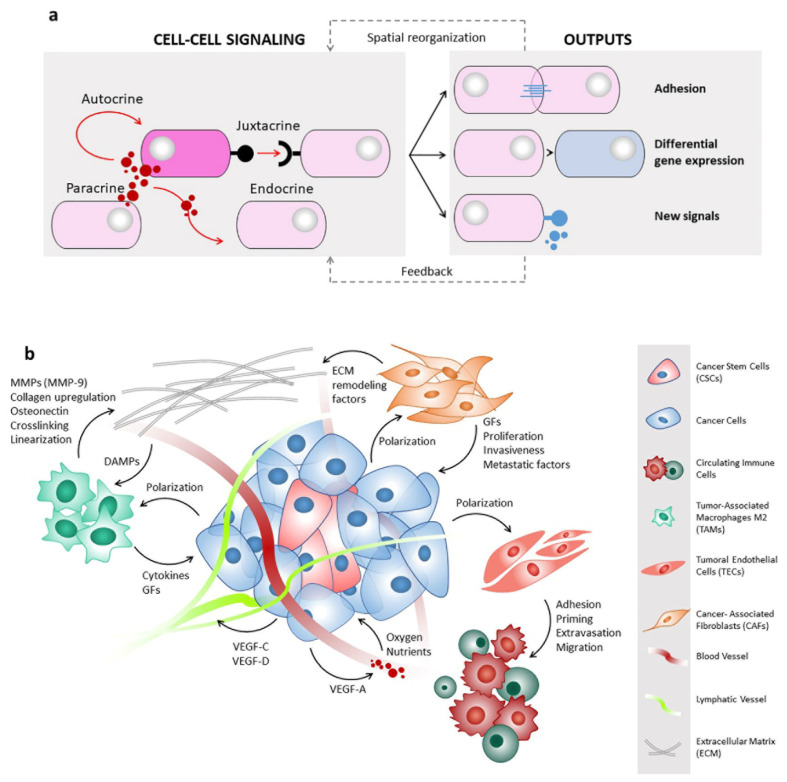Figure 3.
Types of cell–cell interactions and communications in tumour microenvironment. (a) Cells communicate through various types of signalling that allow chemicals to travel to target sites in order to elicit a biological response. In autocrine signalling, cells produce ligands that induce a cellular response through cognate receptors for those molecules expressed in the same cell. Paracrine signalling depends on the local diffusion of secreted molecules from one cell to other neighbouring cells. In contrast, cell–cell contacts are required for iuxtacrine signalling, where molecules directly pass between cells via gap junctions or other structures without secretion into the extracellular space. In endocrine signalling, molecules are secreted and travel long distances through extracellular fluids such as the blood plasma to reach target cells and tissues; typical mediators of this communication are hormones. The action of signalling molecules on target cells triggers new downstream signalling, modifies gene expression, and influences cell–cell adhesive properties and spatial organization. In response to these changes, feedback mechanisms can be activated to maintain cell/tissue homeostasis. (b) Multiple cell types are present in the tumour microenvironment, and all of them contribute to the maintenance of the complex and dynamic network of signalling molecules characterizing the peritumoral niche. Tumours and cancer stem cells (CSCs) produce angiogenic and lymphangiogenic factors (VEGF-A and VEGF-C/D, respectively), and in turn, blood vessels deliver nutrients and oxygen. In addition, tumours and CSCs secrete molecules able to induce the acquirement of a pro-tumoral phenotype, i.e., able to polarize macrophages to M2 subtype, fibroblasts to CAFs, and ECs to TECs. All these cell types drive cancer cell proliferation, invasion, and metastasis through the production of growth factors, cytokines, and ECM remodelling enzymes.

